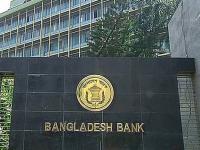Bangladesh became independent on 16 December 1971. After being released from the jail of Pakistan on 8 January 1972, Sheikh Mujibur Rahman returned via London to independent Bangladesh on 10 January 1972. The following day on 11 March 1972, in his capacity as the President of newly independent Peoples’ Republic of Bangladesh, issued the Provisional Constitution of Bangladesh Order 1972.
Subsequently on 23 March 1972 the Constituent Assembly of Bangladesh Order was promulgated as envisaged in the Provisional Constitution of Bangladesh Order 1972. This Order provided for parliamentary form of government [Preamble of the Order] and constituted the Constituent Assembly [Clause 7 of the Order] with the Members of National Assembly (MNAs) and East Pakistan Provincial Assembly (MPAs) who were elected, under the Legal Framework of President Yahiya Khan’s martial law, by the people of East Pakistan in December 1970 and January 1971 for giving the newly independent country a secular democratic Constitution.
It should be noted that the first written document, Proclamation of Independence [which is considered as the first interim Constitution] declared and adopted on 10 April 1971 giving retrospective effect from 26 March 1971, provided for presidential system of government. It affirmed and resolved that “Sheikh Mujibur Rahman shall be the President of the Republic.” It says, inter alia, “The President shall be the Supreme Commander of the Republic, shall exercise all the Executive and Legislative powers of the Republic including the power to grant pardon.” However, the Provisional Constitution of Bangladesh Order 1972, issued by Sheik Mujibur Rahman, provided for parliamentary form of government. It says “And Whereas it is the manifest aspiration of the people of Bangladesh that a parliamentary democracy shall function in Bangladesh” [Preamble of the Order]. It further says “There shall be a Cabinet of Ministers with the Prime Minister at the Head [Clause 5].
The President shall in exercise of all his functions act in accordance with the advice of the Prime Minister” [Clause 6]. It looked contradictory. So the establishment of the parliamentary form of government was challenged at the Apex Court in Fazlul Hoque V State 26 DLR (AD) as being contrary to the Proclamation of Independence, but the Supreme Court turned down the challenge stating that the Proclamation of Independence invested the President with the “Legislative powers of the Republic” which empowered him to make any law or legal provision, even of a constitutional nature.”
The total Members elected as MNAs and MPAs in December 1970 and January 1971 elections were 469 (169 MNAs and 300 MPAs). Among them 12 died in the meantime before the Constituent Assembly was formed, two became Pakistani citizens, five were arrested under the Collaborator’s Order, 46 were declared disqualified under the Constituent Assembly (Disqualification of Membership) Order and one went to Foreign Service. The remaining 403 Members formed the Constituent Assembly. Out of them, 400 Members belonged to the Awami League, one (Surenjit Sen Gupta) belonged to the National Awami Party (NAP) and two [Manbendra Narayan Larma commonly known as Santu Larma was one of them] were Independents.
The Constituent Assembly had its first meeting on 10 April 1972. The Speaker and Deputy Speaker were Mr Shah Abdul Hamid and Mr Mohammed Ullah [who later became President] respectively. In this session a Constitution Drafting Committee consisting of 34 members (including Syed Nazrul Islam, Tajuddin Ahmed and AHM Kamruzzaman) was formed under the Chairmanship of Dr Kamal Hossain (the then Law Minister). The only woman member of the Constitution Drafting Committee was Razia Banu, whereas the only opposition member was Mr Surenjit Sen Gupta. The Drafting Committee had its first meeting on 17 April 1972. In that meeting a resolution was adopted inviting proposals and suggestions from all sections of the people. In response to this invitation, 98 memoranda were received.
However the final report of the Drafting Committee did not mention at all whether any of those memoranda was accepted. The Drafting Committee had 74 meetings to draft the Constitution and on 10 June 1972 it approved the Draft Constitution. With a purpose of observing practical working of the parliamentary constitutional system, the Chair of the Committee Dr Kamal Hossain went to the UK and Indian. A foreign expert on drafting Constitution was reported to have brought to Dhaka and his assistance was taken in drafting the Constitution. In fact, the Constitution of Bangladesh was drafted in the light of [impliedly] British and [heavily relied on] Indian Constitution. On 11 October 1972 the last meeting of the Committee was held where the full Draft Constitution was finally approved.
The Draft Constitution of 72 pages containing 103 Articles was presented to the Constituent Assembly on 12 October 1972, in its second session. On this day Dr Kamal Hossain introduced the Draft Constitution as a Bill. The Constituent Assembly did have general discussion for seven days, from 19 October 1972 to 3 November 1972. At the first phase of general discussion Cabinet Members Syed Nazrul Islam Tajuddin Ahmed, Khodker Mushtaq Ahmed, Monsur Ali, Professor Yousuf Ali, AHM Kamruzzaman, Abdul Malik Ukil, Mizanur Rahman Choudhury took part.
The only opposition Member Surenjit Sen Gupta and independent Member Manbendra Narayan Larma also took part in the discussion. During this discussion 163 amendments were proposed. Among those, 84 amendments were adopted of which 83 were moved by Awami League Members and one was by Surenjit Sen Gupta. Interestingly most of the amendments were relating to linguistic and grammatical errors of the Bill. The Third Reading on the Bill was held on 4 November 1972 and on the same day the Assembly adopted the Constitution of Bangladesh. To commemorate this historic day, 4 November is observed as the ‘Constitution Day.’ It was given effect from 16 December 1972, on the first anniversary of the ‘victory day’ of Bangladesh.
The original hand written Constitution was of 93 pages. The main writer of the original Constitution was Mr Abdur Rouf. The handwritten Constitution was decorated by noted Artist Joynal Abedin. The hand written Constitution, both Bengali original one and its corresponding English translated one, was signed by the Members of the Constituent Assembly on 14 December 1972. The then only opposition Member [currently Awami League MP] did not sign the original hand written Constitution. At the time of the Constitution being adopted, the President and Prime Minister were Justice Abu Sayed Chouwdhry and Sheikh Mujibur Rahman respectively.
The Constitution has been so for amended fifteen times: most of the Amendments were made for the personal [for example Sixth Amendment, Ninth Amendment and Eleventh Amendment etc.] and/or party political interests [Fourth Amendment, Eighth Amendment and Fifteenth Amendment etc.] as opposed to national interests. Fifteen Amendments, within 40 years time, seem to be quite high in number compared to the constitutional Amendments in other similar democratic countries during the same corresponding period.
Source: News From Bangladesh
—————————————











What kind of ‘parliamentary democracy’ has been provided in the constitution that conferred a dictatorial power on the Prime Minister? Are we now in a ‘democracy’ that our people dreamed of or it’s a ‘demoncracy’ we have been made to fall victim to? What kind of democracy have our bragging constitution makers presented us that has given boundless scope to divide the nation on countless lines disregarding the safety and sovereignty of the country? Did we common people want such a constitution under the wheels of which we shall be sacrificed?